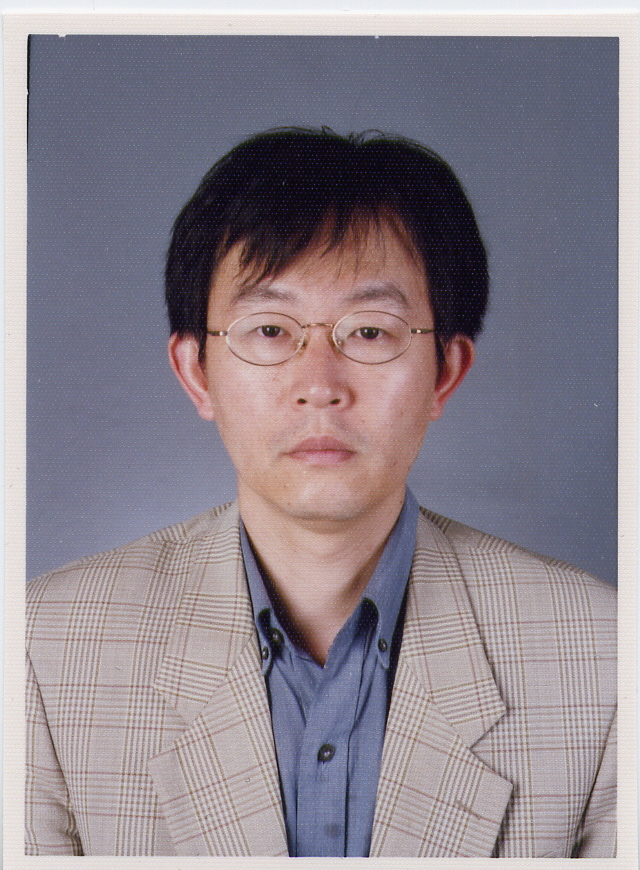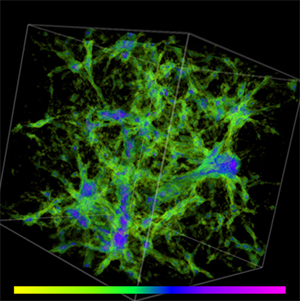Dongsu RyuProfessor, Center Director

Office location: LWC 309Phone: +82-52-217-2148 (office),+82-52-217-2130 (fax) Email: ryu AT sirius.unist.ac.kr Website: http://sirius.unist.ac.kr/ryu/
Notable Results

The nature and origin of magnetic fields in the intergalactic space are important problems that are yet to be understood. Ryu et al (2008) propsed a scenario in which turbulent flow motions are induced via the cascade of the vorticity generated at cosmological shocks during the formation of the large scale structure. The turbulence in turn amplifies weak seed magnetic fields of any origin. Simulations based on the scenario predict that the average magnetic field strength would be a few μG inside clusters/groups, approximately 0.1 μG around clusters/groups, and approximately 10 nG in filaments. The volume-rendering image shows the logarithmically scaled magnetic field strength at z = 0 in the box of (100 h^−1 Mpc)^3 volume. Color codes the magnetic field strength from 0.1 nG (yellow) to 10 μG (magenta) (Figure below). The colors were chosen so that clusters and groups show as magenta and blue and filaments as green.
Research Interests
Astrophysical fluid, plasma astrophysics Shock wave, turbulence, magnetic field, cosmic ray Large-scale structure of the universe
Most Cited Papers
- D Ryu, JP Ostriker, H Kang, and R Cen, 1993, The Astrophysical Journal 414, 1, A cosmological hydrodynamic code based on the total variation diminishing scheme
- D Ryu and TW Jones, 1995, The Astrophysical Journal, 442, 228, Numerical magnetohydrodynamics in astrophysics: algorithm and tests for one-dimensional flow
- D Ryu, H Kang, E Hallman, and TW Jones, 2003, The Astrophysical Journal 593, 599, Cosmological shock waves and their role in the large-scale structure of the universe
- D Ryu, H Kang, J Cho, and S Das, 2008, Science 320, 909, Turbulence and magnetic fields in the large-scale structure of the universe
- D Ryu, DRG Schleicher, RA Treumann, CG Tsagas, and LM Widrow, 2012, Space science reviews 166, 1, Magnetic fields in the large-scale structure
